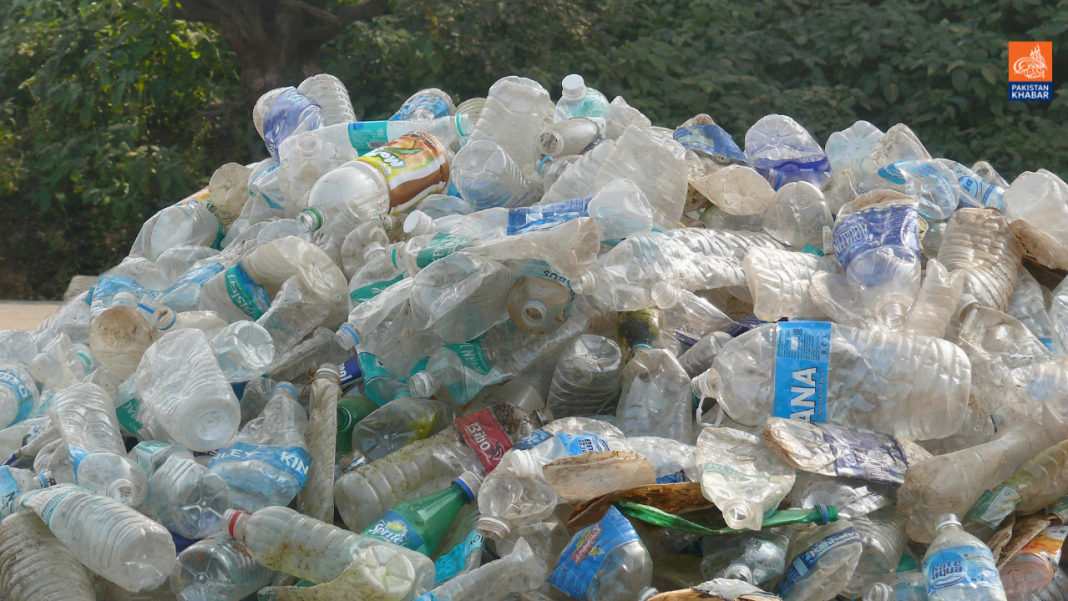A newly released World Bank report underscores that plastic pollution is a significant regional issue in South Asia, identifying six countries responsible for facilitating the cross-border movement of pollutants. These include solid waste such as plastics, industrial effluents, domestic wastewater, and microplastics, primarily transported through 20 major rivers.
The report highlights that, in addition to river pollution, South Asian countries share other cross-border environmental challenges like air pollution, as well as common socioeconomic and solid waste management difficulties.
Two key transboundary river basins, the Ganges-Brahmaputra-Meghna (GBM), involving Bangladesh, Bhutan, India, and Nepal, and the Indus River basin, including Afghanistan, India, and Pakistan, are noted for their high rates of plastic leakage.
Throughout South Asia, plastics, especially single-use plastics, are leaking into the environment via rivers, streams, and drains due to inadequate waste management systems. The report points to significant issues throughout the waste management value chain, including poor waste collection and segregation, lack of recycling and recovery infrastructure, and improper disposal and processing facilities.
The report emphasizes that while all types of waste are affected by poor management, plastics pose particular challenges due to their durability and light weight.
Titled “Waves of Plastics: A Snapshot of Marine Plastic Pollution in South Asia,” the report aims to provide a comprehensive overview of plastic waste flow into the region’s water bodies and to support the development of evidence-based policies and strategies for reducing plastic pollution. It also advocates for a transition towards a regional circular economy for plastics.
The report notes that the rapid growth of both population and industrial sectors has turned densely populated areas into hotspots for plastic waste generation, making them primary sources of plastic leakage into river systems. These areas experience far higher levels of plastic leakage compared to the more rural regions across South Asia.
Currently, there is limited emphasis on reducing plastic production or improving the collection, separation, and recycling of plastic waste in the region. Although plastic consumption remains lower than in more economically developed countries, it is on the rise in South Asia.
While alternatives such as bioplastics are being considered, there are no clear standards or guidelines in place for their use. The report also highlights that the region’s high rate of mismanaged plastic waste is due to a lack of focus on recyclability during the initial design phase of products, leading to a proliferation of single-use plastics with limited recycling potential.
This problem is further aggravated by inadequate infrastructure for waste collection in both urban and rural areas across South Asia.
In the region, the informal sector—comprising waste pickers, small-scale recyclers, and local waste collectors—plays a critical role in managing plastic waste, especially in areas where formal infrastructure is insufficient or non-existent.
While there are commonalities in waste management and related policies across South Asian countries, there are differences in plastic production, manufacturing, and usage patterns. To effectively reduce plastic waste leakage, interventions are needed throughout the entire value chain. However, South Asian countries currently lack coordinated efforts to reduce plastic consumption or manage specific plastic waste.
Although plastic waste and marine pollution have received increasing policy attention over the years, the report notes that enforcement and implementation remain weak due to factors such as inadequate enforcement, lack of implementation capacity, and limited public awareness. Effective policy implementation requires strong infrastructure, logistical support, leadership, and active participation from both the private and informal sectors, according to the report.




